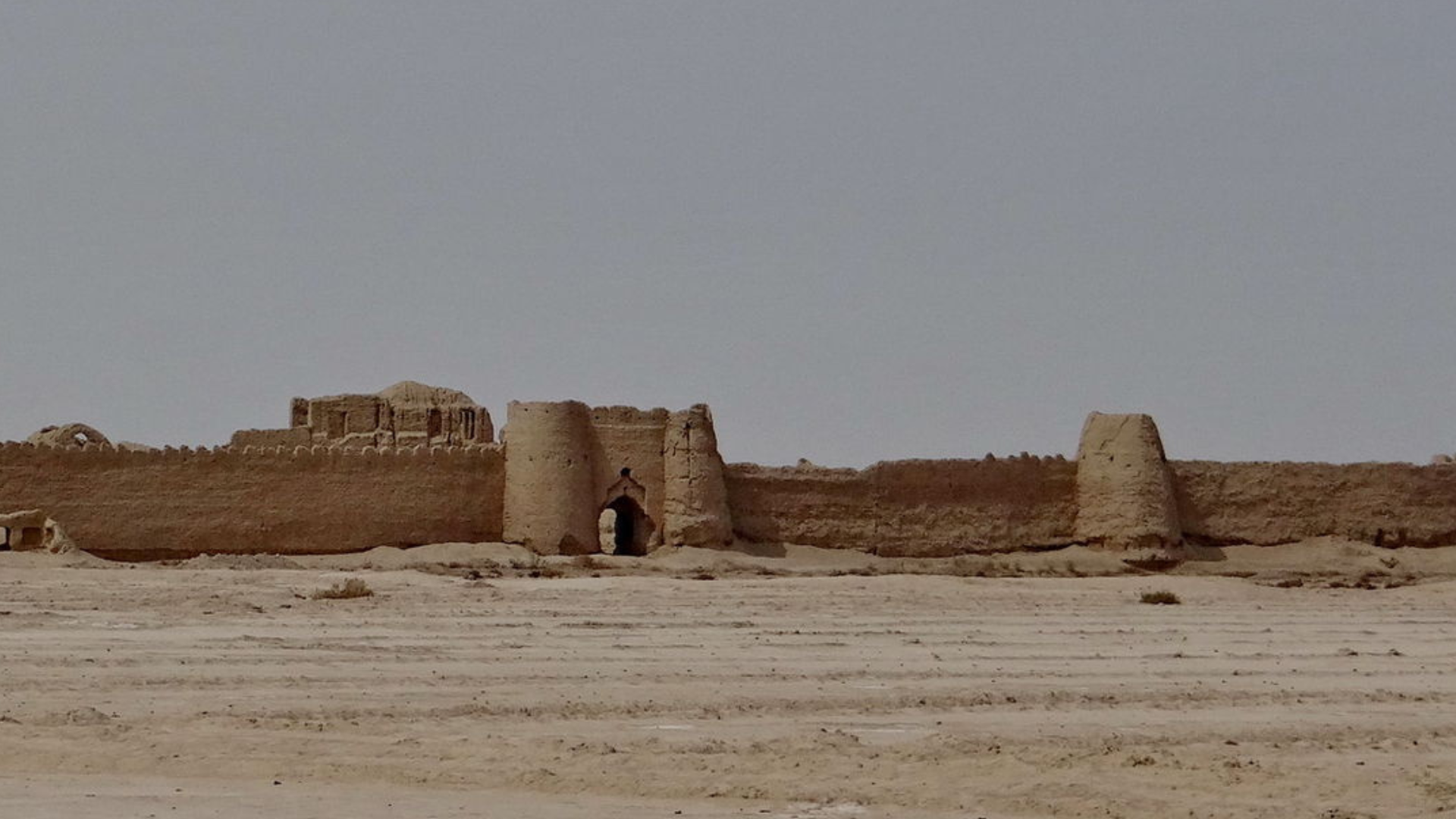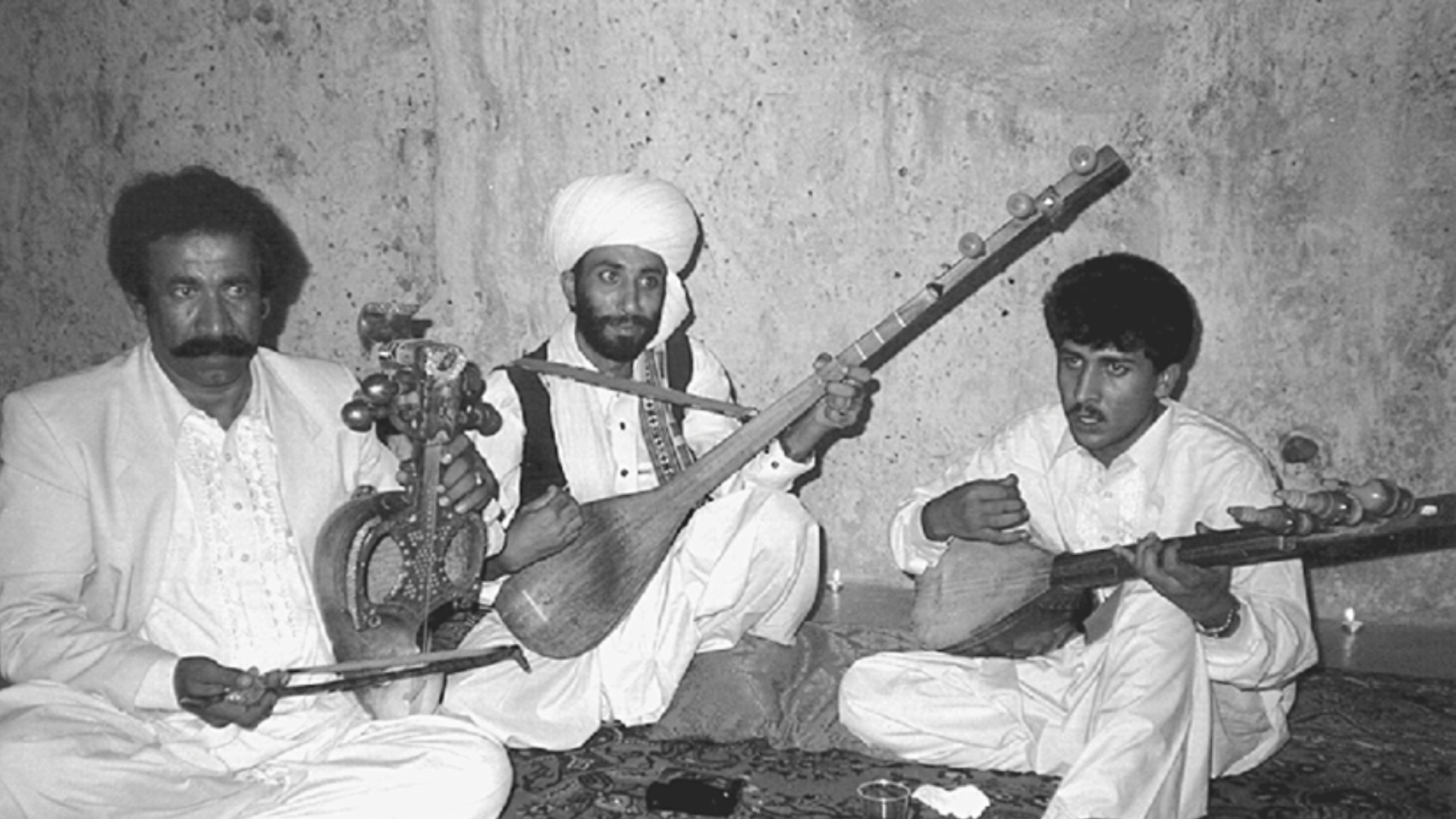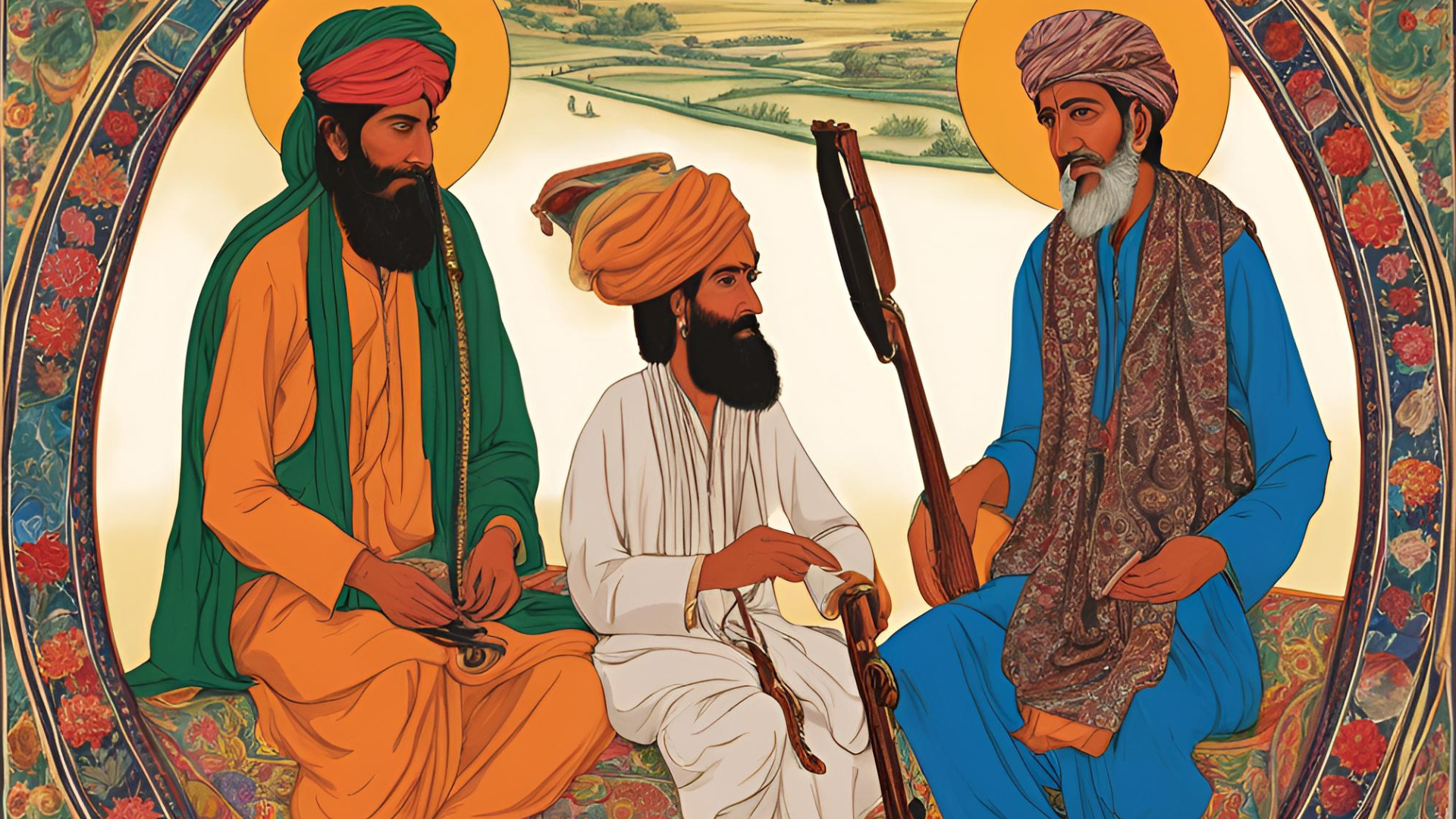
Mir Barakat: the ruler of Western Mekran
Author: Nasser Boladai
First of all, I would like to extend my gratitude to Mr. Abbas Mir, the grandson of Mir Barakat for sharing Mir Barakat’s story with me. As we all know, not much has been done about the history of Baluchistan, and when it comes to the western territories, the work is next to zero. Mekran in modern times is divided into three parts: Eastern Mekran which was ruled by Kalat and was politically influenced by the Britain strongly Mehrab Khan Gichki tried to do his best to free it from the British rule. Similarly, Central Mekran was annexed by the Qajar, Bahram Khan and Dost Mohammad Khan Barakzehi did their best to free the central region from the domination of the Iranian government. In Western Mekran, Mir Barakat ruled. He resisted the attacks of the British army and defended that part of Baluchistan to protect the freedom of the Western Mekran; in the similar manner, he also stood in front of Reza Shah Pahlavi's army.
This article is a small effort to bring forward the history of the western territories. I ask all those who know or have heard anything about Mir Barakat himself or his wars with the British or Iranian governments to comment, my email is shared below the article. Also, if anyone has information about Mirza or Murad Khan, help me to understand more about it.
Mir Barakat Abdul Nabi was the ruler of Jask and Mir Haji was the ruler of Sirik. The borders of his rule was extended to Minab. The two cousins were fighting for power. In the conflict between these two mirs, Haji was killed and Mir Barakat conquered territories from Minab, Sirik and Bashagard to Rudbar. He advanced to the vicinity of Bandar Abbas, and this geographical area became a large part of Baluchistan at that time. Mir Barakat was the commander of the people of his region and the Hoot and Taherzehi tribes had also accepted his leadership. Mir Barakat’s mother was the daughter of Allah Verdi Khan from Bashagard region and for this reason she also ruled Bashagard.
When Zargham Al-Saltanah ruled Rudbar, he fought Mir Barakat three times over Bashagard, and Mir Barakat defended this part of his rule well all three times.
Muhammad Ali Sadid Al-Saltanah has written about the forces of Mekran and Jask in his book ‘Bandar Abbas and the Gulf’. He wrote that Jask and Desert Chiefs are close relatives. These two: Mir Mustafa and Mir Barakat are brothers and in times of war they can gather more or less 4,650 warriors. (Sadid Al-Saltanah (Kababi), 1363, 706-707).
Mir Barakat’s territory was close to the sea and had a valuable strategic position. The Britain tried to take over the area. British forces tried to establish a close relationship with Mir Barakat, but he refused to be under the British rule. Mr. Barakat’s response to the Britain was: “Our customs and yours are different.” The Qajar government also tried to dominate it due to the strategic and commercial value of western territories.
At the same time, the borders of Ottoman Turkey extended to the Arab countries of the Gulf, and the closest area of Baluchistan to the Ottomans was Western Mekran. Turkey had noticed the plot of the West and because of its enmity with Britain wanted close relations with Mir Barakat. Meanwhile, Britain and the Qajar government allied to overthrow the government of Mir Barakat.
Because the religion of the majority of the Turkish population, like the Baluch, was Sunni Hanafi, that was one of the reasons why Mir Barakat was close to the Ottoman Turkey. Mir Barakat approached the Ottoman rivals to maintain his rule. He sent a representative to Turkey and he brought weapons from Turkey. In the same way, he established friendly relations with the King of Afghanistan, Amanullah Shah.
The Britain traded in arms. In 1883, the British agent in Bushehr filled the southern regions of Qajar and Ahvaz with weapons; weapons that were better than the weapons of the Qajar and the forces of the British government (Daneshvar, 1989, 27-29). At the same time, a British agent named Darya Beigi was trying to take over the trade of Baluchistan.
Baluch were fighting for their national sovereignty in every corner. The Qajar government, which had friendly relations with Britain, weakened after the death of Nasser al-Din Shah. Another event that encouraged the Baluch people was the advancement of the Muslim Turks in the Christian country of Greece. The Turks and the Baluch who belonged to the same sect of Islam, that new development reassured the Baluch as well. (Daneshvar, 1989, 27-29).
In a war between the Baluch and the British in 1891, a British major named Mayer was wounded and one of his companions was killed. The British head of the Chabahar and Jask Telegraphs was also killed. The British in response attacked the Baluch people and set fire to many villages and hamlets. In another battle between the Baluch and the British, Lieutenant Parker, a British soldier, was killed, shortly after, British invaded the town of Panjgur.
During those years, the Baluch attacked the British from all sides, tearing the wires of the telegraph lines and besieging the British military camps. At the same time, Mehrab Khan Gichki, who ruled Panjgur, fought with the British. He captured the British commander and asked them to leave Turbat, which was ruled by a small group and was an ally of the British.
Darya Beygi was set out to plunder Mekran and encounters Mir Barakat’s army in an area called Kelavi. In the war between them, Mir Barakat wins and the British army was defeated. Mir Barakat plundered many cannons (Daneshvar, 1989, 27-29). It is said that one of these cannons was located at the Kohstag checkpoint.1 After this victory of the Baluch, the British and Iranian forces from three sides targeted Baluchistan (Daneshvar, 1989, 29).
The British army encountered Mehrab Khan’s army between Ormara and Pasni. In that war, in which Britain was superior in terms of new weapons, Mehrab Khan was defeated. The Baluch tried to import weapons from Muscat, but Britain seized a ship carrying weapons for Baluch people. There were four hundred and eighty boxes of guns in that ship (Daneshvar, 1989, 29).
In the Central Mekran, Mehrab Khan Barakzehi succeeded in expelling the Qajars. The British recognized him as the ruler of Baluchistan and signed a treaty with him (Daneshvar, 1989, 33).
Shah Amanullah Khan ruled Afghanistan from 1919 to 1929. He expanded the reforms started by his father, Amir Habibullah I. He sought to improve the education standards and women rights in Afghanistan. The Third Anglo-Afghan War took place in the early years of his reign. At the same time, the Bolsheviks came to power in Russia and founded the Soviet Union. Britain from British India, accompanied by religious leaders started a riot and overthrew the kingdom of Amanullah Khan (Jawad, 1992, 15).
Meanwhile, Mir Barakat delivered weapons to Shah Amanullah. One of the causes of Britain’s enmity with Mir Barakat was its proximity and cooperation with Shah Amanullah. British influence in Afghanistan was increasing. Britain was trying to weaken or change the Afghan government. During the reign of Amir Habibullah I, a constitutional movement was formed in Afghanistan. Amir Habibullah and Amanullah had also been supporters of that movement. The movement dated back to an Afghan intellectual named Mahmoud Tarzi, who was displaced in Turkey. Britain feared that the constitutional movement and Shah Amanullah’s reformist efforts might bring Afghanistan closer to the Soviet Union (Jawad, 1992, 15).
In 1911, Britain formed an army of different battalions and sent Mir Barakat to the battle of Western Mekran. That division consisted of 103rd, 320th, 190th and 151st battalions (Sadid al-Saltanah (Kababi), 1363, 705-706). The army arrived at the port of Sirik on April 25. Muhammad Ali Sadid al-Saltanah wrote in connection with the battle between Mir Barakat and the British army that the army boarded ships on April 21, equal to the second of Thor. On April 25, they disembarked at Sirik, a port in the desert region, and landed to seize the newly brought weapons, thanks to Mir Barakat, the Baluch leader. Mir Barakat helped and allied with the Afghans in the arms trade. The army besieged Mir Barakat, 160 men, who had taken refuge in the hills. Mir Barakat’s men were forced to retreat after much bravery and standing up to the British army. Eight of them were killed and twenty-four were injured. In this battle, one of the high-ranking British officers was killed and three soldiers from the 104 Battalion were wounded. Forty rifles and four thousand bullets that had reached the port of Sirik fell into the hands of the British army (Sadid al-Saltanah (Kababi), 1363, 706).
There have been many wars between Mir Barakat and Britain, but I have not heard of all of them.
Meanwhile, the Qajar government had become very weak and the Britain was trying to resist Soviet influence in Iran in order to prevent Russia from being close to India’s borders. In 1918, the situation in Iran was so bad that it was in danger of collapsing and disintegrating. Britain signed a treaty known as the “1919 Agreement” to protect Iran. According to the agreement, Iran’s political, military and economic affairs would be under British control. All the territory of Iran was indirectly under British rule (Rajaei, 137-138, 22). But in the long run that did not meet the imperialist aims of Britain at the time. Ahmad Shah, the king of Qajar, was a weak ruler and could not resist internal movements and external pressures.
In 1921, the new Russian government signed a treaty with Iran, renouncing all concessions that Czarist Russia had taken from Iran. The British were astonished by this Soviet work (Raja’i, 137-138, 30).
The British realized that the 1919 advisory agreement not only did not meet British intentions in Iran, but would lead to the rise of British enemies. In order to achieve their goals, they decided to establish a dramatic centralist government in Iran that was also authoritarian. They also cultivated the nationalist ideology of Persia to be the enemy of communism and to stand against the Soviets. After that, enmity with the Arabs and Turks became part of Persian nationalist identity.
The Iranian army was obedient to the British and Reza Khan Mir Panj, a general close to the British. “We brought him and we took him,” Churchill said of Reza Khan.
Reza Khan staged a coup in 1921, overthrew the Qajar government and declared himself president.2 At first he wanted to follow in the footsteps of Kemal Ataturk, but soon after he proclaimed himself king and proclaimed his kingdom.
Reza Shah, with the help of the British, organized the affairs of Iran in order to fulfill their goals. In the first step, he suppressed the nations and deprived them of their sovereignty. According to many, “If our elders had cooperated with Britain, Britain would have recognized the sovereignty of our lands, and now, at least as the Arab states of the Gulf, we rule our lands.”
British policy towards the whole of the Middle East had not been the same. In relation to the Arab people, their territories were divided and small and weak countries had been created, but in relation to Iran, it has tried to create an independent, showy and authoritarian government to suppress the people inside the country and lack popular support and legitimacy. As a result, it is needy and dependent on Britain to maintain itself. Sheikh Khazal, for example, became dependent on Britain between the Ottoman Empire and the Qajar government to maintain his autonomy, like other Arab sheikhs. He obeyed British orders and agreed to Britain extracting oil from his region and usurping other resources, however Britain allowed Reza Shah and helped him capture Ahwaz. Sheikh Khazal’s closeness to Britain did not work for him, and Britain did not change its policy of creating Iran and Persian chauvinist nationalism.
Reza Shah sent envoys to Mir Barakat and said not to befriend foreigners and be under his command. Mir Barakat consulted with his brothers and people. In particular, the children of Mir Barakat refused to relinquish their sovereignty. Mir Barakat refused to be under Iranian rule, and as a result, the Iranian army attacked the western machinations. There have been two wars between Iran and Mir Barakat, but I have not yet received reliable information about them.
In 1929, the Iranian government tricked Mir Barakat into attending a compromise meeting.
Mir Barakat went to meet with the Iranian representative, but he was arrested and imprisoned. Mir Barakat died after serving five years in prison. Nine other people were arrested along with Mir Barakat: his two children Abdullah Khan and Jalal Khan, and among the other seven, Khoda Dad and Ibrahim, e the children of Qambar. From that group, only Jalal Khan returned and the others died in prisons.
Mir Barakat’s son Mir Mirza’s fough with the Iranian army seventeen times. In the words of Mr. Abbas Mir: “In the war between the people of Mir and Iran, two thirds of his people were martyred.”
Murad Khan, son of Mir Mustafa and nephew of Mir Barakat, fought the war with the Iranian army in 1940; twenty-four of Murad Khan’s men were martyred. The number of Iranian army casualties are unknown.
Mr. Abbas Mir told me that: [“In one of these battles, a Baloch man came by and saw that many of Murad Khan’s men had been killed.” He said to Murad Khan: ‘Give me a gun so that I can share in your happiness.’ Murad Khan replied: “Take a gun and fight.’ The man fought and was wounded, then turned to Murad Khan and said: “I have avenged my blood.’ Murad Khan said: ‘Congratulations to you.’ And that man died.]
Eventually, the Iranian army arrested Murad Khan and had him executed in Chabahar.
The writer can be reached at [email protected]
References:
Sadid al-Saltanah (Kababi), Mohammad Ali, Bandar Abbas and the Persian Gulf, correction and introduction: Ahmad Eghtedari, by the effort of Ali Satayesh, publisher of Book World, 1984. Reza Daneshvar, An Introduction to the History of Balochistan (during the Qajar Period), by Ali Dehbashi, published by Negar 1989.
Jawad, Nassim, Afghanistan A Nation of Minorities, Minority Rights Group International, London1992.
Rajaei, Zia-ud-Din, 1919 contract, which paved the way for the coup d’etat of 1299, Political-Economic Information, No. 137-138
1Mr. Mostafa Nikkhah narrated that part to me. I’m grateful for his kindness.
2At the same time, there was talk of what the name of the country should be. From ancient times, foreign countries of Iran were known as Persia. The people of Iran call the government Qajar and we Baluch, who were Qajar’s neighbors and have always been the target of their oppression, we changed the word Qajar according to the phonetic system of our language and called it ‘Gajar’.
Dr. Mohammad Ali Najafi has written that in our country, the name of Iran was replaced by Persia according to the royal decree in the time of Reza Khan in 1935, equal to 1314 AH. Since then, Iran has been formally used in all documents and correspondence (see: US Strategic Plan on Iran and the Middle East, a research document from the US Strategic Research Institute, translated by Dr. Mohammad Ali Najafi, published by Millions of Iran- London 1987.)


